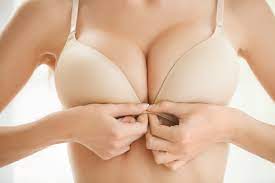Fat grafting is one of the latest Breast augmentation with fat techniques. This procedure has revolutionized both aesthetic and reconstructive breast surgery.
Table of Contents
Fat grafting
Fat transfer, also known as fat grafting, is an effective option for breast augmentation. This procedure involves harvesting fat from an area of the body (usually the thighs or buttocks), purifying and injecting it into the breasts. This technique produces long-lasting results, and patients can enjoy natural-looking breasts.
However, the procedure Fat transfer breast augmentation can have its risks. The most common risk is fat necrosis, which occurs when the fat does not receive adequate oxygenated blood during the transfer process. This can cause bubbles or lumps to form in the breast. These lumps may resemble breast cancer, but if they aren’t cancerous, they can be removed and treated.
Women who have lost breast volume due to breastfeeding or pregnancy are excellent candidates for fat grafting. Women who have had breast implants may also benefit from this procedure. They should have realistic expectations.
Side effects
Fat grafting for breast augmentation is a safe procedure with minimal side effects. In most cases, about 50 percent of the fat cells transferred survive the procedure and remain in the new site. The remaining fat cells are absorbed by the body. Some patients experience firm areas, oil cysts, or calcifications, but these side effects are temporary and can be treated with surgery.
Fat grafting is considered a less invasive method than implanting breast implants, but it has not been studied extensively. There are only a few studies involving less than a hundred women. Moreover, the average follow-up period is less than 4 years. Also, some studies show that fat injected into the breast may be reabsorbed by the body, leading to loss of volume.
Cost
Fat grafting is a popular breast augmentation Cosmetic surgeon in India procedure that uses fat from a patient’s body. The process involves making tiny holes in the breasts and injecting fat into those areas. Band-Aids are used to cover the injection sites, but no sutures are used. It may take several treatments to achieve the desired breast size.
The procedure is performed under general anesthesia and takes between 1.5 and two hours to complete. The surgeon will first collect fat cells from a donor site using liposuction. The excess fluid is drained from the fat cells, and then they will be injected into the breasts using small incisions.
Although fat transfer is costly and not suitable for every patient, it can offer moderate breast augmentation without the need for implants. It also allows patients to retain the shape of their breasts for many years afterward. The amount of fat transferred depends on the type of fat and the size of the patient’s breasts. A consultation with a cosmetic surgeon can help determine whether a patient is a good candidate for fat transfer. The doctor will also determine the number of procedures needed.
Safety
Fat grafting is a safe alternative to breast implants because it is made from a patient’s own fat. It is also more natural, meaning there is less risk of allergic reaction. It also results in more natural-looking breasts, and the procedure leaves virtually no scarring. Another benefit is that it requires less maintenance than implants and can offer benefits such as body contouring.
Fat grafting is most commonly used to fill in hollows and contour depressions in the chest wall after a mastectomy. A mastectomy removes most of the subcutaneous fat layer and leaves a hollow behind. Fat grafting can help correct this, but it is not reliable for building an entire breast.
Optimal procedure
Fat grafting is an excellent alternative to breast implants and is a good option for women who have lost breast volume after pregnancy or breastfeeding. It can also help women who have multiple capsular contractures from their breast implants. Ideally, candidates for this procedure should be in good health and have realistic expectations.
Fat grafting is more expensive than breast implants and can cause lumps or irregularities. Some women are wary of the process because of the risk of calcification and irregularities in the harvested fat. However, it is generally considered a safe procedure. Although it can be risky, fat transfer is generally safe and will not increase the risk of breast cancer. It can also be used to correct asymmetry in the breasts. Structural fat grafting is also a good option for women who have sagging breasts. This procedure can lift and reshape sagging breasts and cover existing implants.
Conclusion
Fat grafting can increase the size of a woman’s breast by about one cup size. Compared to traditional implants, this technique can last longer. In addition to delivering a permanent lift to the breasts, structural fat grafting allows the fat to become infused with a blood supply.

